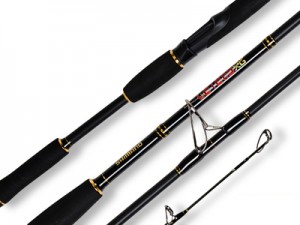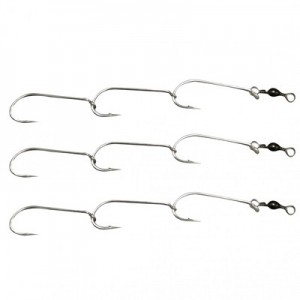 The Facts on Beaches in Australia
The Facts on Beaches in Australia
Beach Fishing Australian beaches is for many Aussie anglers the most rewarding form of the sport bar none. Why wouldn’t it be? With 36,000km of beautiful Aussie coastline, one could fish the beaches for several life times and still barely scratch the surface, always enjoying an abundance of our most famous sport and table species. A recent publication by Professor Andy Short provides some very interesting facts about Australian beaches that only confirms how blessed we are here down under. In many respects, it is beach fishing in Australia that remains the last bastion of angling exploration. According to Short “Most of the coast is unvisited…I think Australians would be surprised to learn that the typical Australian beach has no name and no access”. This sort of information augers well for the beach angler determined to experience untouched, pristine beach fishing environments. Short goes on to say that “Twenty five per cent of beaches are accessible by car along a sealed road, 14 per cent are accessible by four wheel drive and 55 per cent aren’t accessible at all.” One could argue that ‘access’ should be rated against desire to access. There might not be a road but, a want of roads never stopped the determination to access places yet untouched. Lawson, Blaxland and Wentworth crossed the mountains without a road. The results were historic.
Adventuring sprit aside the average beach angler can access 25% of our beaches in their humble day drive. That’s approximately 9000km of easily accessible beach. The beach angler also enjoys a dizzying array of beach fishing gear and tackle, and beach fishing tips to hit the sand with confidence. Regardless of budget restraints, experience or lack thereof, beach fishing is available to all, is incredibly rewarding and a famous discipline within the sport where you can enjoy access to awesome fish in some of the most picturesque environments Australia has to offer.
Before we look at basic beach tackle, rigs, lures and tips, it should be noted that beach fishing doesn’t necessarily mean surf fishing. There are hundreds of kilometres of Australian beaches that will never see a wave, even in heavy storms. Many Aussie beaches are protected bays or islands and reef. The surface of the water can be as flat and wave action free as a lake or millpond. This fact is important to note as it can alter the species you will find as well as the tactics and tackle employed to catch them. When fishing a flat beach you can fish very light indeed.
 Beach and Surf Fishing Gear and Tackle
Beach and Surf Fishing Gear and Tackle
The modern beach angler will see every fishing rig, combo and set up imaginable on the beach. From a 6ft rod sporting a small 1000 size spinning reel to a full game fishing rig set up to tackle the biggest of sharks the ocean has to offer. Of course, there is everything in between. Volumes could be written about fishing the beach and indeed have been. The key thing to remember is that much of your beach fishing kit will be determined by the location, conditions and the target species.
The most common species beach anglers target are the Tailor, Bream, Flathead, Whiting, Australian Salmon, Dart and Mulloway. Of course depending on where you are in Australia you can include fish such as Mackerel and Trevally. For the purpose of keeping this article concise, the surf fishing tips, surf fishing rigs, lures for the beach and common baits will represent a flexible, general purpose kit that gives you appropriate access to all of these species.
 Surf Fishing Rods
Surf Fishing Rods
Look for rods starting at 10ft up to 12ft and even longer. The key feature of the surf fishing rod will be its casting ability. All the famous brands such as Shimano, Daiwa, Penn and Wilson have a fabulous selection to meet all budget restrictions. The tip here is to get as light as practicable. Holding such a big rod for hours on end can bring on fatigue. Full graphite or composite is best. Spinning rods designed specifically for the beach are the best place to start. Choosing the rating can often be personal preference and depends on whether you want more sport, casting distance, and the size of fish you target. Start at ratings around 3kg and up. This will also be heavily influenced by the reel you choose. It should be noted, if you feel like going old school and traditional and feel you would like to use an Alvey Reel, you must get a low mount surf rod to match. An Alvey is a side cast reel and requires a rod that is designed for the reel. The butt of such rods are very short.
Surf Fishing Reels
With the exception of choosing an Alvey rig, you would usually start with choosing a rod then select a reel to balance. While overhead reels and side cast reels are fine, it is very hard to go past the modern spinning reel. The technology is fantastic and most of the major manufacturers have beach specific designs. Like the rod, the reel should have premium casting qualities, they should be very strong and durable. Sand and surf can wreck a spinning reel very quickly if it does not have the right inclusions. Sealed drag and bearings are nigh on essential, next to its casting attributes. Full graphite reels are excellent in fighting off corrosion and should also top your list. Keep in mind, while there are beach fishing reels available at very cheap prices, a reel that has all the features you require plus durability, will cost a little more. The common beach fishing reel sizes will of course depend on your rod but as a guide will normally be from 5000 to 14000 size. These would be spooled with mono from 5kg to 10kg. Braid is fine also, and the choice of mono or braid comes down to personal preference.
 Surf Fishing Lures
Surf Fishing Lures
Here are a selection of lures that are tried, tested and very successful on our beaches. For the most part, casting requirements, wave conditions and the wind will determine the most appropriate lure for the day. While there a host of other lures one can use on the beach. These are the most common.
- Metal slices are just about the best lure for the beach and definitely the most common. They are available in many sizes to match the bait fish your target is eating. Flexible retrieve options and incredible casting qualities make them invaluable.
- Soft plastics are also very good on the beach. Use a jig head only as large as required for casting purposes. Add some fish attractant to the lure for even better results.
- When the surf is a little flatter, with little or no wave action, try a popper for spectacular results.
- Hard bodied minnows are also very good in the surf. Size will be determined by how far you need to cast and they only need be shallow divers.
 Surf Fishing Rigs
Surf Fishing Rigs
Here are a selection of beach fishing rigs that are very simple and very successful. These rigs will handle pretty well all fishable surfside conditions.
- The classic. For Tailor, Mackerel and Aussie Salmon, run as much weight as required for casting, directly to a gang hook set in sizes 3/0 to 5/0 hooks. Use a snap swivel to connect your line to the hooks, this way you can change hooks quickly and mitigate against line twist. Add a West Aussie Pilchard or Garfish for bait.
- Connect a lure to your snap swivel and start casting. Nothing is cleaner, simpler and more rewarding.
- A sinker and swivel connected to a leader of around 50-100cm is a fantastic general purpose rig for all species. The hook size and style will depend on your target. If there are whiting, Flathead or Tailor about, use a long shank. Use only enough lead for casting to your strike zone.
- A great rig for when the surf is pumping is the good old Paternoster. Sinker styles are variable here but often about holding the bottom to combat lateral sweep. Try a star shape sinker or a grappling style sinker. Single hooks or ganged hooks are great for this rig.
Surf Fishing Tips
- Buying cheap, poor quality equipment to be used on the beach is a false economy. Purchase the best you can afford. Durability in the sand and surf counts.
- Survey beaches from a high vantage point whenever possible. Check for variations in the water colour for an indication of gutters and holes. A good set of binoculars comes in handy for this. You can also use your high point and binoculars to spot feeding activity on the water.
- When you feel a Whiting bite at your bait, walk slowly back up the beach to encourage the strike.
- While a featureless beach while hold fish, always seek out structure. This is where the fish are feeding.
- Be aware that fish will often feed right at your feet. Casting as far as you can every time will often take your bait or lure straight past the strike zone. Whiting are a classic for this, and often, a throw of just a few meters puts you in the zone.
- While evening dawn and dusk are the standard times to fish, don’t be afraid to fish a gutter or hole at any time of the day but if you can correspond that with a rising tide around an hour or so before hand till an hour or so after the turn then you will be better prepared for a bite.
- Just because you’re fishing a beach doesn’t mean you need heavy gear. Depending on weather your beach is calm, Try a 6ft rod with a spinning reel around 2500. Fish 3kg line with fresh flesh baits, like pippi or worms, or soft plastics. The Bream and Whiting love it. The bonus is, when you hook into an Australian Salmon, you’re set for the most wonderful fight you can imagine.
Fishing Tackle Shop has all your beach fishing gear and tackle at awesome prices. What they don’t have is not worth buying. Stock up now and get out on one of our beaches to catch yourself a feed. Bag out on Bream or tackle a Tailor, just make sure you visit fishingtackleshop.com.au before you go.
